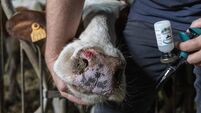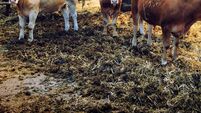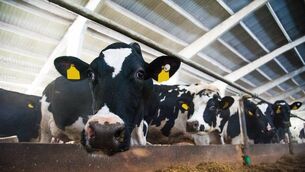Don’t mistake realism for pessimism

This caricature has us going about looking to earn our livelihoods constantly scanning the horizons for reasons to be discouraged.
I can’t say I’ve ever noticed farmers to be more innately pessimistic than any other occupation but if we are to perhaps more accurately talk about a wary scepticism then I might be tempted to agree that farmers are a little more sceptical.
But I’d also quickly point out that they have every reason to be more wary. When it comes to expectations about the prospects for their occupations then farmers are very entitled to be sceptical.
Take, for instance, the latest price cut introduced by GIIL, the state’s largest milk processor. Last week, I chaired a meeting between ICMSA county officers in the Glanbia region and senior management of GIIL, including chairperson Henry Corbally, and chief executive James Bergin.
GIIL milk suppliers are increasingly anxious about the substantial gap that has developed between the GIIL milk price and that of other Co-ops and the atmosphere of the talks was decidedly robust and straight-talking. The various county officers left GIIL in no doubt that the development of such a price gap was unacceptable and needed to be addressed as a matter of priority.
What made the development of this price gap so concerning was that it has been allowed open up in the face of previous commitments made by Glanbia/GIIL that were absolutely clear and which their suppliers are perfectly entitled to insist be met in full. At the time of its establishment GIIL made a categorical commitment to paying a competitive milk price – it couldn’t have been any clearer — and the feeling of the suppliers as expressed at the meeting was that the current milk price gap that the processor has allowed to open up between their price and the price being paid by other processors is absolutely at variance with that commitment.
The support from Glanbia Co-op was acknowledged by the county officers but they were equally clear the Co-op can’t go on subsidising GIIL indefinitely. GIIL should be paying a milk price in line with market returns — something the ICMSA county officers at the meeting felt they are clearly not doing this at this time.
GIIL has the largest milk pool in the country with a very strong product mix and the representatives of their milk suppliers at our meeting bluntly told them that they are obliged to deliver a consistently strong milk price for the farmers who have repeatedly backed the milk processor in its strategic reorganisation and changes to group structure.
The prices being paid by Ornua to milk processors justifies a milk price of at least 26 cents per litre and, indeed, several processors are paying in excess of this price, but GIIL stands out at present by paying a milk price two cents per litre below this level.
And while we accept that not all GIIL product is traded through Ornua, the obvious logical reason for this is that GIIL have higher priced outlets available for that product, and so on that basis the Ornua index should be seen as a minimum benchmark.
As far as the GIIL suppliers are concerned, the present milk price they are receiving is both ‘off’ the Ornua price and – independent of that anomaly – is at variance with a reasonably solemn commitment made by the processor at a time of strategic reorganisation when the support of the farmers was sought and needed. The suppliers at the meeting evidently feel that they were given some ‘plamas’ by the processor when their votes were needed to green light that organisational restructuring but now a more hard-eyed commercial view can be taken and the farmers must just accept that. All of which suggests a very relevant question: Who could blame farmers for being sceptical?
In the meantime, we still have strong suspicions about the nature of the differentials between the price we get for our beef and the prices our closest neighbours receive for their produce.
The average differential between the UK and Irish prices for an R3 steer since the start of 2013 stands at 63c per kg but the current quarter differential is 87c per kg so farmers are asking what has caused this current 38% spike in the differential between UK and Irish beef prices and we’re not coming up with any logical, believable, explanation.
This difference amounts to a very serious variance in the take-home payment from a factory on each side of the Irish Sea — an 87c difference on an average 350kg steer amounts to over €300 per animal. The suggestion that this differential can be attributed to fluctuating exchange rate can be dismissed because it doesn’t stand up to a second’s scrutiny: the euro weakened by 15% between Q1 2013 and Q3 2015 but the percentage price differential between what Irish farmers get for an R3 and their UK counterparts get has soared to 300% over the same period. Whatever the explanation is, it most certainly is not exchange rate fluctuations.
I’m not surprised or even offended by the suggestion that Irish farmers are a little more sceptical about the projection, forecasts and plans for their sector.
In the face of the reality and this kind of experience, I’m only surprised that they’re completely cynical.










